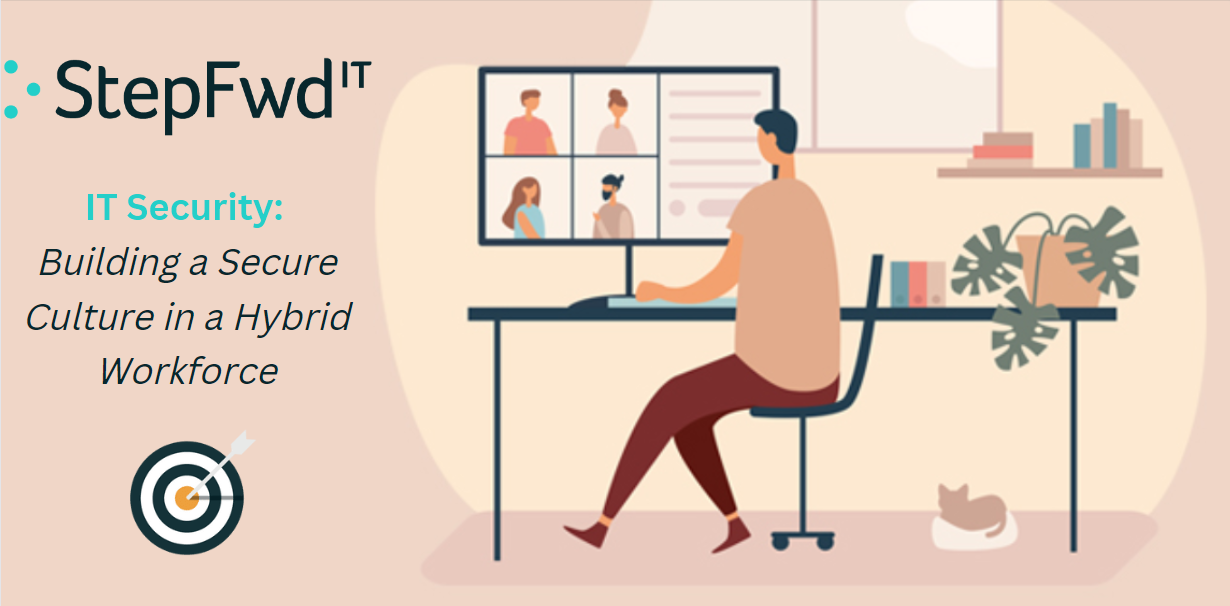
How to Build a Security-First Culture That Empowers Your Hybrid Workforce
Working from home has become a staple of many offices in the past few years. Whilst it may be convenient to many, cybercrime experts believe it is perpetuating the recent rise in corporate cybercrime. Unless implemented properly, many companies are leaving themselves exposed through their employee’s home networks.
The Australian Bureau of Statistics (ABS) recently reported that almost half of Australia’s workforce frequently work from home. Whilst this may seem reflective of pandemic conditions, the hybrid workforce model seems to be here to stay. However, a secondary report by Australia’s Signals Directorate found that up to 200,000 work-from-home internet systems are vulnerable to hacking attempts. The combination of a hybrid workforce and rising cyber-attacks incites potential for security havoc for many businesses.
Tools are only as good as their users. This should be your guiding philosophy as the world shifts to a hybrid work model. While it’s great to define and implement essential security controls and tools, if it isn’t backed up by workforce buy-in and participation, you could be in for a bumpy ride. As put by Oracle cloud security engineer Scott Fletcher – “it’s all too common for laptops to be issued to remote employees, without a single question being asked about the environment in which it will be used.”
You need to devise a comprehensive cybersecurity strategy that involves and empowers your workforce. Here are the critical components of this strategy:
Perimeter-Less Technology
In a hybrid work model, you will have employees spread over multiple locations, working together online. For that reason, some may use less secure home internet connections for work while others may use personal devices to get the job done. That’s why it is critical to upgrade your security systems, tools and controls to make sure they match the demands of a hybrid environment.
This means going truly perimeter-less and investing in cloud-based SaaS applications, secure VPNs, identity and access management tools, patch management applications, unified endpoint management systems, and backup and recovery solutions.
Documented Policies and Procedures
If your security policies and procedures are not clearly documented, you will struggle to enforce them. Identifying critical IT policies and procedures like change management, remote access, incident response, etc. Then, have all of them documented and shared with the concerned teams and members of your staff. Most important, remember to keep the files up to date and in an easily accessible, central location. Subsequently, this will make it easier to enforce policies. Employees will know what is expected of them and why. Finally, it is critical to review policies periodically and actively make changes if needed.
Security Awareness Training Programs
Aim to make your employees the first line of defense against cyberattacks. Consequently, although this approach has been around for years, it is even more relevant in a hybrid work environment. The risk factor is higher, so you must take it seriously—no more gimmicks to meet compliance requirements.
Deploy engaging training programs that will help reduce human errors, develop good security habits and create awareness about the current threat landscape. Equally important, you should create training videos and a knowledge base covering security best practices and SOPs.
Along with that, you should set up interactive training programs that help employees learn how to defend against phishing, ransomware, brute-force password attacks and social engineering. After training, reinforce what they learned by conducting routine tests and simulations.
Communication and Support Channels
Your business will always be able to stay actively on top of cyber threats when communication and support channels are crystal clear. Every staff member will know how to raise an alarm, whom to contact and what to do after reporting it. More importantly, it will help you detect threats early, thereby allowing you to minimise their impact.
Friction-Free Systems and Technologies
When it comes to devising new security strategies or evaluating new systems, ensure that you give due importance to user experience and efficiency. For instance, if your company’s anti-virus solution is slowing down employee workstations, they may resort to disabling it to get work done, which is a recipe for disaster.
Although security is critical, it shouldn’t come at the cost of efficiency and user experience. In furtherance, following security measures and policies shouldn’t feel like extra work, otherwise employees could grow weary and abandon security best practices altogether. On the whole, make sure your security systems and strategies dovetail nicely with their workflow.
The Next Step...
The truth is, building a security-first culture is challenging. In addition, the hybrid work model has only made it more complicated by adding dozens of new layers and steps to the process. Given these points, you will certainly need skilled staff, 24/7 support and specialised tools if you want to implement a secure culture within a hybrid work environment.
If you are thinking about going down this path, Step Fwd IT can help ensure proper and effective implementation and ongoing management of necessary IT/cybersecurity and data security controls.
Get in touch with the Step Fwd IT Team for a consultation to learn more about how we can help.
Call Us!
We’d love for you to give us a call – whether you just want to have a chat or book a consultation we’re always here to help.
Book a Consultation in our Calendar!
There are a multitude of ways we can arrange a consultation, including Video Meetings and On-site Appointments.
Send us an Email!
Whether it relates to an initial consultation or any of your IT needs, if you need a hand our email inbox will be open.